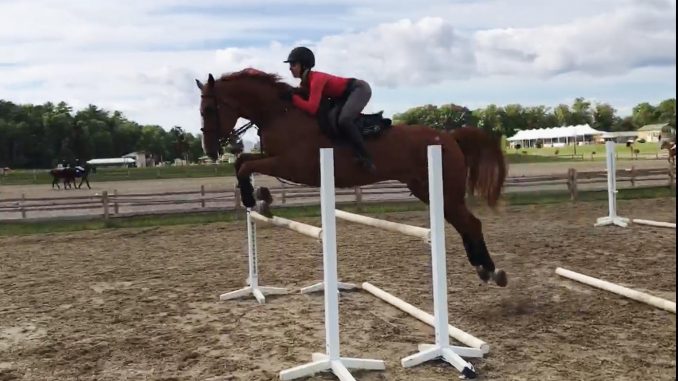
Last year, the SUNY New Paltz athletics department began to transition the club equestrian team into an official NCAA varsity team on campus. After 18 years of being a club team, this year is the inaugural year of the equestrian team as a varsity sport on campus. I have been on this team for four years now that I am a senior, and I am incredibly grateful to the school for giving this team the leg up to varsity status.
As a prospective incoming freshman, I was drawn from out-of-state to this school for its unique town and community, great faculty, courses and the school’s club equestrian team. Each time I visited the campus, I insisted upon visiting the barn where the team rode, Lucky C Stables. I knew for me to be happy at the college I enrolled in, I needed to have horseback riding be a piece of my life for these next four years, and both the campus and barn felt like a home away from home to me.
As a club team for the past 18 years, we have competed under the Intercollegiate Horse Show Association (IHSA) and it has been a highly rewarding experience. IHSA was founded in 1967 by Bob Cacchione while he was an 18 year-old sophomore attending Fairleigh Dickinson University. He created this organization as a way to continue riding and competing at the collegiate level on a more level playing field for a sport that can grow to be vastly expensive. Owning a horse is not a requirement, and neither is knowing how to ride a horse upon joining the team.
IHSA was founded on the premise that horseback riding should be for everyone. There are eight divisions that riders can compete in ranging from “Introductory” for riders who have been taking lessons for less than 24 weeks, to “Open” where riders can jump a three foot course (to be an Open rider you must have an extensive show background at the three foot height and higher). Riders attend shows where the horse they compete on is randomly selected. They are judged on their position on the horse and then awarded ribbons for first through sixth place. These ribbons earn both individuals and teams points, that can qualify individuals and teams alike to move on to IHSA regional, zone and national shows.
Our team is in a competitive region, where the teams we compete against are Centenary University, Marist College, William Paterson University, Vassar College, United States Military Academy, Sarah Lawrence College and Drew University. For a team of seven riders in a highly competitive region, we hold our own and as a team are currently fourth out of the eight teams in the region, with two of our team members qualified for regionals.
Upon making the jump to a varsity team, we were able to also add a National Collegiate Equestrian Association (NCEA) team as well. In this format, riders are jumping heights from 2’9 to 3’6 and there is a flat test portion as well. Five riders from each team go head-to-head competitions. Five horses are selected for each event. Each rider is paired with one of the five horses in a random draw before the competition. Riders from opposing teams compete on the same horse in the head-to-head competition. Each rider receives a score, and the rider with the highest score receives one point for her team. In NCEA competition, the level of difficulty is demonstrated by the accuracy of the pattern and how the competitor uses the horse that she draws to the best of her ability.
It has been a great addition to the caliber of our equestrian team at New Paltz to be able to have both an IHSA and NCEA team. Horseback riding is rarely ever a team sport, so being able to work together on a team with other girls who share the same passion is amazing. Having the chance to finish out my senior year playing the sport I love at the varsity level has been an absolute gift, and I am excited to give it all I’ve got at regionals in the spring.
